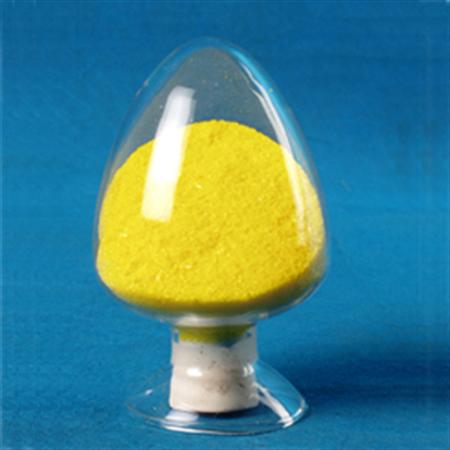
【Product name】 Pralidoxime iodide
【CAS NO】 94-63-3
【Property】 This product is yellow granular crystal or crystalline powder; odorless, bitter taste; easy to deteriorate in light; dissolved in water or hot ethanol, in It is slightly soluble in ethanol, insoluble in ether, and easily destroyed in alkaline solution.
【Pharmacological action】 This product is an antidote to organophosphorus pesticide poisoning. For mild organophosphorus poisoning, this product or atropine can be used alone to control symptoms. For moderate and severe poisoning, atropine must be combined because it has accumulated in the body. The acetylcholine has no effect. After intravenous administration, the blood quickly reaches an effective concentration. When the dose is large, it can enter the brain tissue through the blood-brain barrier, and the kidney is quickly discharged without accumulation of poisoning. When an organophosphate insecticide (such as dichlorvos, 1609, 1059, etc.) enters the body, it binds to cholinesterase in the body to form a phosphorylating enzyme, which loses its role in hydrolyzing acetylcholine, thus accumulating acetylcholine in the body., a series of symptoms of poisoning. Pralidoxime iodide and other antidote can bind to the phosphoryl group in phosphorylcholine choline esterase in the body, and the cholinesterase is freed to restore its activity of hydrolyzing acetylcholine, so it is also called cholinesterase reactivation agent. Pralidoxime iodide and the like can also directly bind to the organic phosphates in the blood, and become non-toxic substances discharged from the urine.
The characteristics of this product are: 1 The phosphorylation enzyme has a reactivation effect on the short-term poisoning time, and the phosphorylation enzyme has been reactivated after a certain period of time, after the phosphorylation enzyme has aged (dealkylated). The activity of cholinesterase is difficult to recover. Therefore, when applying an anthraquinone re-activator to treat organophosphorus poisoning, the sooner the better, the better. 2 This product has different effects on different organophosphorus compounds. It is generally considered to be effective against sand phosphorus, parathion, endogenous phosphorus, thiopentate, malathion, and ethion. For tower collapse, dichlorvos, and enemy The effect of the worm is poor, and it is ineffective for Soman. There is still controversy about Luoguo and oxidized Luoguo. 3 different re-activators have different effects, that is, different anti-toxic potency to organic phosphorus. 4 Although it can eliminate peripheral nicotinic symptoms such as muscle tremor and muscle weakness after administration, it can not directly resist most of the effects of acetylcholine, that is, it can not eliminate central symptoms, venom-like symptoms and other nicotine symptoms, so it is moderate to severe. Poisoned patients must be combined with anticholinergic drugs. The steroidal activators are all quaternary ammonium salts, which have poor fat solubility and cannot enter the blood-brain barrier and enter the central nervous system. They have no obvious reactivation effect on the central poisoning activating enzyme, so there is no obvious effect on the central poisoning symptoms. 6 Oral absorption is poor and irregular, and is usually administered intravenously.
【Applicable disease】 is used to rescue organophosphate poisoning.
【Usage & dosage】 Intravenous injection: once daily, every 1kg body weight, livestock 15-30mg.
【Notes】 (1) This product is forbidden to animals with iodine allergy.
(2) It is easy to decompose in alkaline solution and is forbidden to be compatible with alkaline animals.
(3) Because this product can enhance the role of atropine, when combined with atropine, the atropine dose can be appropriately reduced.
(4) Organisms poisoned by organic phosphorus were thoroughly washed with 2.5% sodium bicarbonate solution; OP was also absorbed in the lower part of the digestive tract, and the application was maintained for at least 48 to 72 hours.
Copyright(C)2025 , Henan Huirun Pharmaceutical Co., Ltd. All Rights Reserved. Supported by ChemNet ChinaChemNet Toocle Copyright Notice